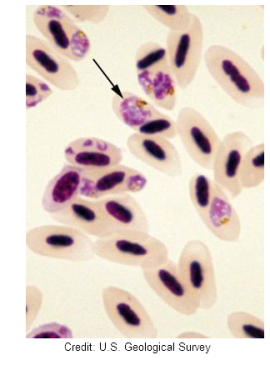Overview of the nested qPCR assay
Host-parasite interactions are known to have important roles throughout ecology and evolution, and the study of avian malaria and related haemosporidians has been very important. Being able to identify indivudal infections accurately and to quantify individual levels of infection is therefore of widespread interest and importance. This qPCR assay is designed to simultaneously identify and quantify Plasmodium spp., Haemoproteus spp. and Leucocytozoon spp. infections from avian blood. We have shown that it is more sensitive than traditional PCR techniques and provides an important quantitative aspect to the data (see Lipponen et al. Submitted). Our research questions involve examining three different parasite genera, but our method is flexible and can be used to analyse one genera or even individual parasite species. The purpose of these web pages is to provide a step-by-step guide to setting up the qPCR assay. In principle, the setup of the assay can be divided to five stages:

1. Validating the qPCR: A an important first step in using any qPCR is to test protocols and efficiency.
2. Identifying parasites: the aim of this stage is to identify which parasites are present in the population.
3. Identifying restrictions sites: the aim of this stage is to identify the restriction sites. This means you can either use the restriction enzymes we utilise, or identify new ones.
4. Normalising the data: to be able to quantify the amount of parasite in the host's blood, the data need to be normalised. This stage can be skipped if the quantitative aspect is not needed.
5. Testing the assay: This stage involves combining all the previously described stages to obtain a working qPCR assay.Before starting any analysis we recommend reading some key papers, in particular about qPCR validation: MIQE: Minimum Information for Publication of Quantitative Real-Time PCR Experiments. Some journals recommend using the MIQE-checklist before submitting a paper. Quantification of mRNA using real-time RT-PCR. This paper gives a good overview of RT-PCR assay development. However, it is important to remember that this qPCR assay does not require the reverse transcriptase steps.
Some general instructions
DNA extraction
For DNA extraction, any type of commercial kit is suitable. However, DNA needs to be pure enough for PCR and should not contain PCR inhibitors.
Restriction enzymes
We recommend using "second generation"-restriction enzymes because they have shorter incubation time, which makes the analysis time shorter. Usually they also have a single buffer which makes digestion with two enzymes at the same time possible.qPCR chemistry
We recommend using SYBR green or other double-stranded DNA binding dyes as a fluorescent dye in qPCR. DNA binding dyes also make it possible to validate PCR-product after the reaction by checking the melting curve. DNA binding dyes do not need a probe, which reduces the design work in assay validation.
qPCR instrument
Any qPCR instrument which is cable of measuring fluorescence from selected fluorescent dye is suitable for analysis. However, qPCR cycler with gradient feature makes qualification of optimal anneling temperature easier. Remember to use qPCR suitable plastics (plates and covers) in your qPCR cycler.


